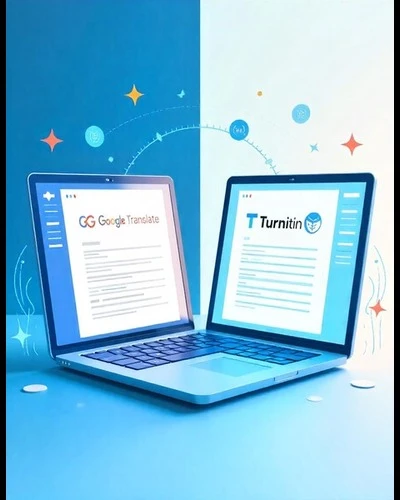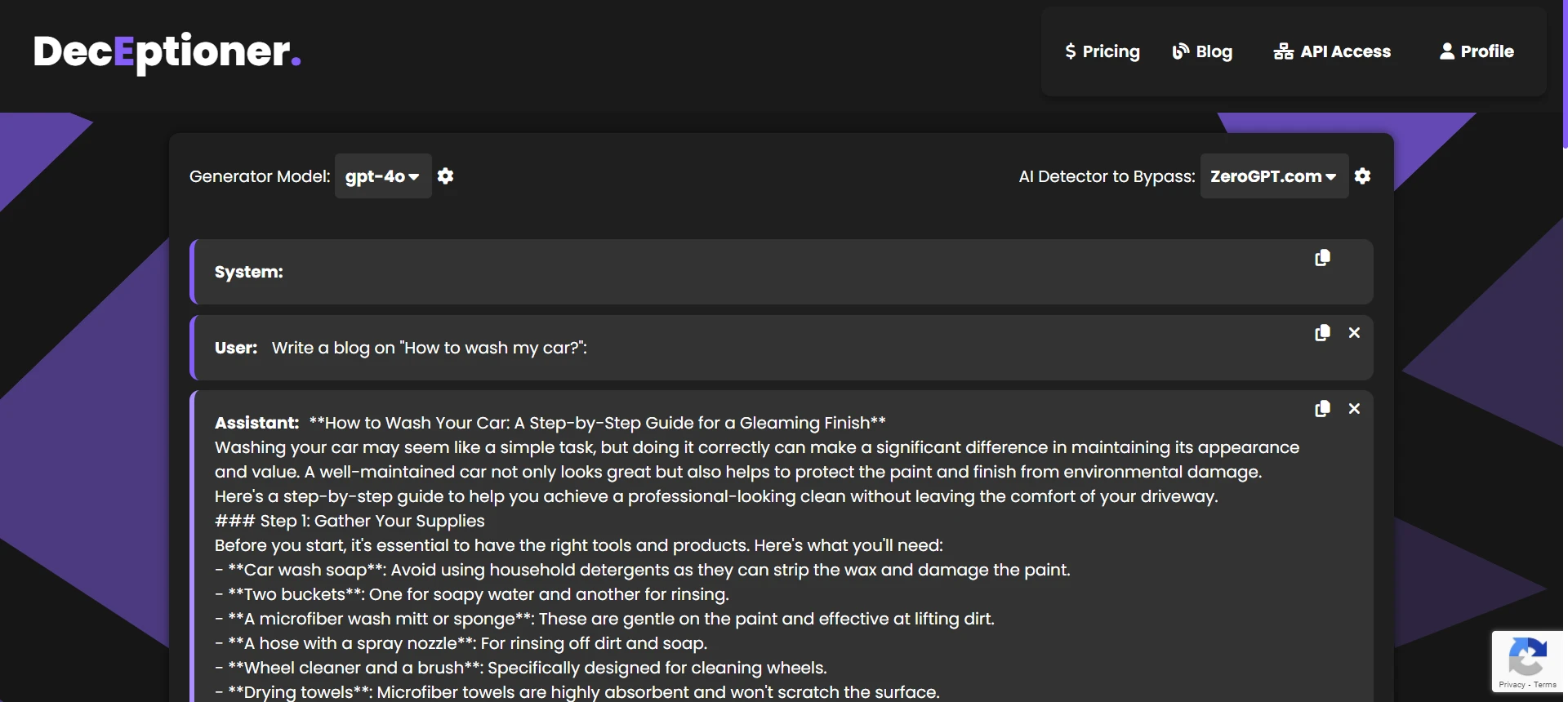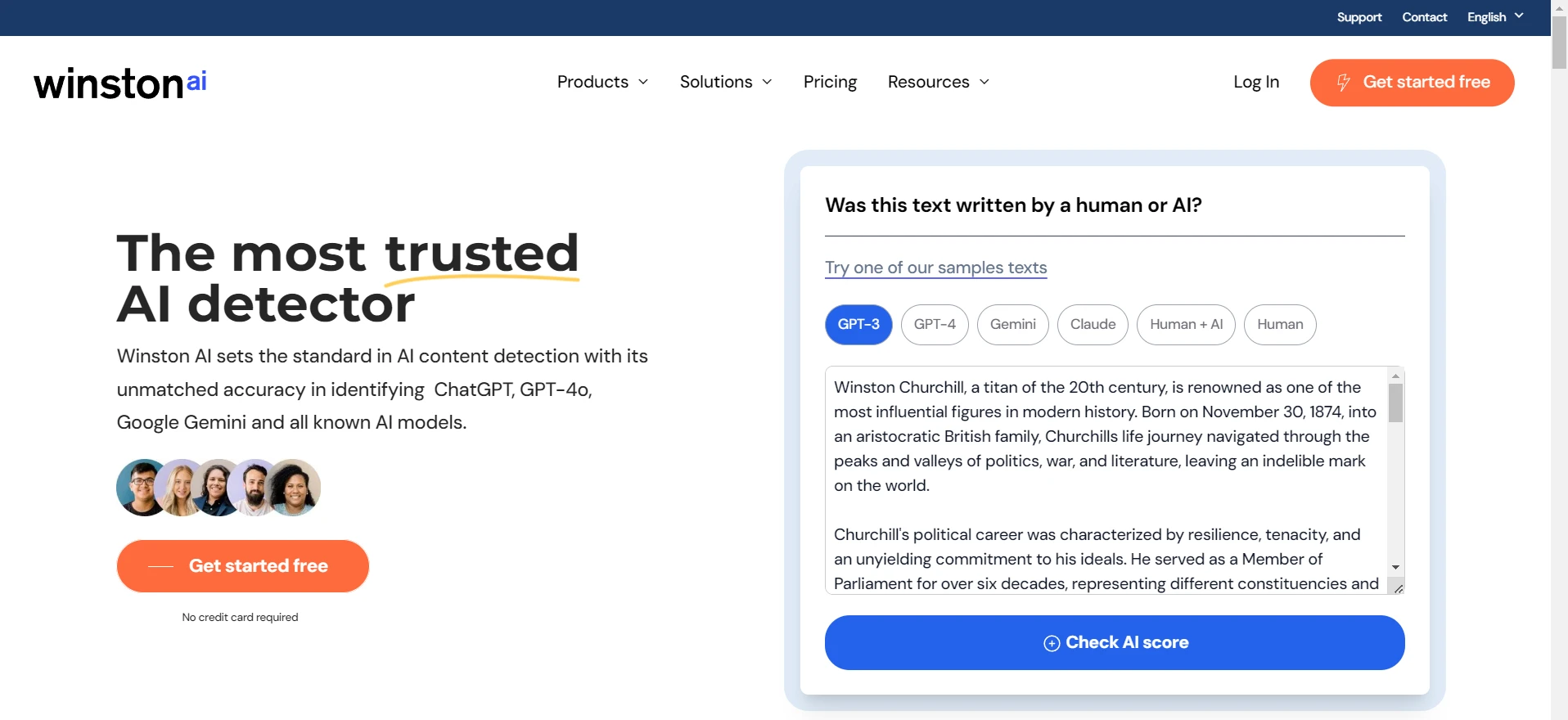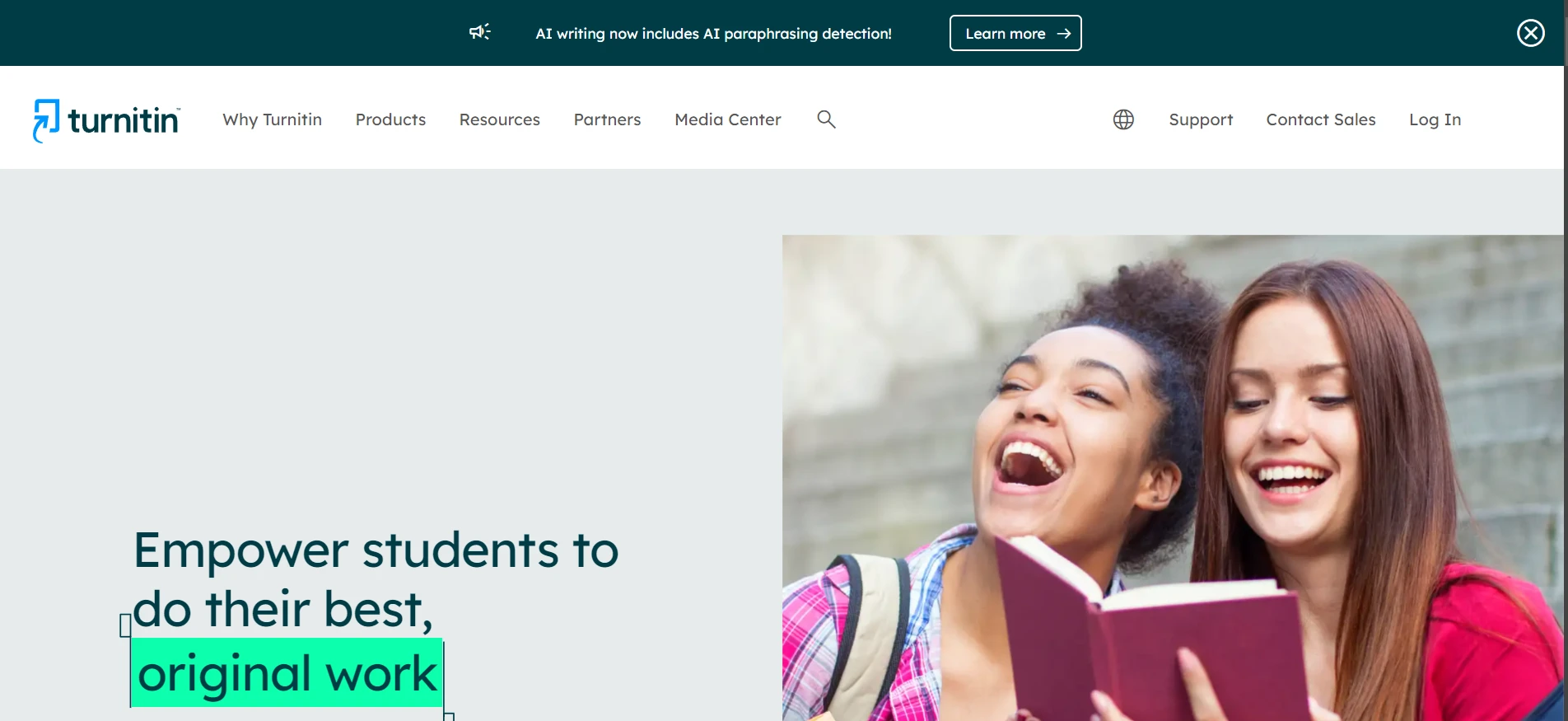Turnitin is one of the most widely trusted plagiarism and AI detectors in the academic world. However, it is not without its limitations.
Its AI detector is not that powerful and is prone to a lot of false-positives. Its plagiarism detector is better but it can be easily bypassed by old school paraphrasing tools like Quillbot or you could even use our tool to bypass both AI detection and plagiarism.
Let us first understand how Turnitin works.
How does Turnitin work?
Turnitin is not just like those other plagiarism detectors.
For its plagiarism detection it not only scans the internet to find similar content, it also uses its massive database of academic papers that it has collected over the years.
This is neat because lazy students might just use Google Scholar or some other tools to find someone else’s paper and plagiarize from it. Also, collecting it over the years and in many different languages as well means they have one gigantic digital library of such papers.
Therefore, most of the cheats will get caught and face the necessary consequences.
Everything was alright, until ChatGPT arrived. It gave such students a whole new way of cheating, one that could easily bypass old school plagiarism detectors.
Speaking of old school techniques, using Google Translate to bypass Turnitin’s plagiarism detector is a trick as old as time. Let us see if the current version of Turnitin can detect it.
Can Turnitin detect Google Translate usage?
Yes, it can detect Google Translate usage but it is not very accurate with regards to it. Meaning, you can still use the Google Translate method and get away with it. However, we seriously don’t recommend academic dishonesty.
Turnitin can detect sentence structures and phrases that come up while using Google Translate. This will simply increase the plagiarism score which your professor might object to.
How does Turnitin get to know about translated text?
Turnitin will never explicitly mention that it can detect translated text or not, but the thing is they are doing it if you pay attention to it.
In my opinion, they might be doing it by using two methods.
Maintain a database of Google Translate mistakes: The first is to maintain a database of common Google Translate mistakes. They can simply run a check through this database and see if any of it is present. Upon finding any such mistakes, they might be just increasing the plagiarism score by a bit.
Use machine learning or statistical analysis: The second is that might be doing it using some kind of machine learning or statistical tools. Explaining how exactly they might be doing it is difficult since we don’t know anything about their internal algorithms. But with advanced machine learning techniques at their disposal, they can easily find if the text is being translated or not.
Is Turnitin’s translation detection robust?
No, it is not that robust and as I have previously mentioned there are many workarounds to it. However, we don’t recommend using it and to be honest with your academic work.
Turnitin’s translation detection falls short in two ways:
1. Human translations: Turnitin cannot efficiently detect human translations because it doesn’t have any of the weird mistakes done by automated tools like Google Translate, DeepL. However, the problem is that if you are going to manually translate text yourself then why not write it yourself in the first place.
2. English to Non-English translations: It cannot detect translations from English to other languages. So, if you want to submit papers in other languages then you don’t need to fear about Turnitin’s plagiarism checker. You can easily bypass it with any of the famous translation tools.
What are the best practices to follow to avoid plagiarism in Turnitin?
You need to follow very simple rules in order to prevent Turnitin from flagging your content.
Here are a few of them:
1. Cite sources
Many students make the mistake of not citing sources properly. They need to follow a particular way of citing sources and maintain them throughout the paper. Citing sources tells Turnitin that some part of the text can be similar to the one in the given link (source). This works great for the Turnitin’s plagiarism detection algorithm.
2. Use a paraphraser
Use a reputable paraphraser like Quillbot or Deceptioner in order to rewrite parts of text you have taken from your sources.
Be sure not to copy entire chunks of text from your sources and paraphrase it because it might help you bypass plagiarism detection but it would be considered as academic dishonesty.
3. Write it yourself
Don’t use ChatGPT or any other tool to write your paper. Since it has been trained on mostly the internet, it might plagiarize from those sources which in turn will lead your paper to get flagged for plagiarism. Furthermore, you will also get flagged for using AI.
Many students try to take shortcuts and use these methods which is not the best way to do things.
Frequently Asked Questions
Q1. Does Turnitin detect ChatGPT translation?
Yes, it can detect translated text. It doesn’t matter if you use ChatGPT or legacy tools like Google Translate or DeepL. The point is that most machine learning models translates in a very particular way and it can be detected.
Q2. Does Turnitin know if you used QuillBot?
Yes, it can now detect if you used Quillbot to paraphrase content. We have tested it and found that it can reliably detect paraphrased content from Quillbot 8 out of 10 times.
Q3. Does Turnitin detect Wordtune?
Yes, it can easily detect content paraphrased with Wordtune. It is not 100% accurate but it works. Also, Wordtune is a general-purpose paraphraser, it was never geared towards avoiding plagiarism.
Q4. Which AI paraphrasing tool does Turnitin not detect?
Deceptioner is one of the most reliable and consistent AI paraphrasing tool that can bypass Turnitin AI and plagiarism detection.
Q5. Will Turnitin tell you if it detects AI?
When an instructor enables it, Turnitin checks for plagiarism in documents submitted via Brightspace assignments using the AI writing detection indicator and report.
The Bottom Line
Despite being a powerful weapon against academic dishonesty, Turnitin is fallible. The tool cannot completely identify content that has been translated or put in different words, more so given the advancement in technology that has seen the introduction of more sophisticated means of translation and paraphrasing. Although students can get by for a while using such tricks, they are very unsafe and can easily lead to problems with ethics and studying. In the sphere of academics, it is vitally important to follow moral principles since by doing so one will not only be able to grow properly but also contribute to maintaining the level of trust within educational establishments. Cutting corners is detrimental to the learning curve and may result in enduring consequences that surpass any immediate benefits.


![[Case Study] Can Phrasly AI Humanizer Bypass GPTZero?](/static/images/can_phrasly_ai_humanizer_bypass_gptzeropng.webp)
![[STUDY] Can Phrasly AI Humanizer Bypass ZeroGPT?](/static/images/can-phrasly-ai-humanizer-bypass-zerogptpng.webp)
![[STUDY] Can Phrasly AI Bypass Turnitin?](/static/images/can-phrasly-ai-bypass-turnitinpng.webp)
![[HOT TAKE] Is Winston AI or GPTZero more accurate?](/static/images/is-winston-ai-or-gptzero-more-accuratepng.webp)





